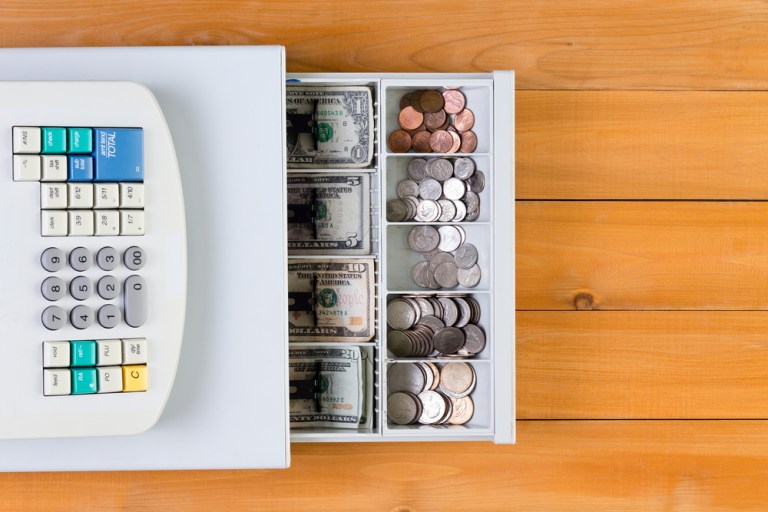Bringing Dollar Store Shoppers Into The Digital Age

While most players in the world of digital retail have felt the sting of the “Amazon Effect,” extreme discount retailers, or “dollar stores,” have remained mostly immune to the onslaught thus far. They’re tallied a customer base nearly 100 million strong and have constructed plans for growth when other brick-and-mortar players are looking to shrink their physical footprint in favor of growing a digital presence.
There are variations on the theme: Some brick-and-mortar retailers, like Dollar Tree and 99 Cents Only, strictly sell all their goods for a dollar or less, whereas chains like Family Dollar and Dollar General keep their prices low — under $10. With such bargain pricing, dollar stores tend to attract the lowest income customers. Family Dollar and Dollar General’s largest cohort of shoppers, as individuals and as a family, earn about $8,000 less annually than the typical Walmart shopper, with average household incomes of $44,972 and $45,640, respectively, to Walmart’s household average of $53,125.
Low-income consumers tend to be the market segment where online commerce has the weakest penetration, as they’re the customers most likely to be unbanked or underbanked (with the least access to payment methods necessary to pay online) and often have difficulty coughing up the cash to make their orders large enough to qualify for free shipping ($35 tends to be the market minimum unless a special is going on) or for speciality programs like Prime (though that is changing).
Retail experts — who, like Silicon Valley, have long ignored the extreme discount shoppers — are starting to reconsider. While lower income consumers make up the various dollar chains’ largest customer segment (25 percent to 30 percent of their customers make more than $60K a year), those value shoppers are certainly able and willing to shop online. And, while individual spend among lower income consumers is far lower than their affluent counterparts, a full 50 percent of the U.S. population makes lower income wages. In aggregate, their spend is valuable.
Hence the growth of all those brick-and-mortar dollar stores.
The bigger brands are making a bigger push to capture those customers too, but for the last several years, Hollar has been after the segment and building value.
The Hollar Difference
Hollar’s CEO David Yeom knows his way around a dollar retailer. His East Los Angeles youth was spent finding creative ways to expend his allowance there.
When it came time to enter the world of eCommerce, Yeom and Co-Founder John Um transported much of the Dollar Store appeal to the web. If you’re looking for a fancy user experience, you’re looking in the wrong place: The charm of Hollar is in the sort of directness and prominent pricing displays that distinguishes a good discount retail run.
Most of the company’s inventory goes for $2, and $10 is the price cap; shipping is free at $25 (which will net a shopper an awful lot of inventory). Some of the brands are named and are very recognizable, if rather marked down. Others — like Num Noms candy — are for the adventurous dealseeker willing to try a new thing for the right cheap price.
As for Hollar’s customers, in some ways they’re familiar to anyone who spends a good deal of time looking at the demographics of eCommerce: Moms aged 25 to 34. But, Yeom noted, those eCommerce moms are also a bit different — skewing less urban, less coastal and much less affluent than their counterparts in digital commerce.
“It fills us with a tremendous amount of pride that 80 percent of the shipments being sent out of our warehouse is to outside California and New York,” Yeom told Fast Company. “It’s going to Middle America. And we embrace it.”
Success, of course, is an easy thing to embrace, as the firm reports double-digit sales increases monthly and an average basket size that has swelled to $30.
“It’s an area that has been underserved,” Yeom said. “There’s been, historically, a lack of innovation to do more for this segment [in eCommerce], and you will find more and more businesses will start to cater to them.”
The Emerging Competition
In fact, those competing innovations have started to emerge. Amazon has lowered the cost of its Prime Membership to around $7 a month for consumers enrolled in the food stamps program. The company has also recently introduced an under $10 store of its own that feels similar to Hollar’s offering.
However, Yeom is ready to battle it out. Vendors will be held to Hollar’s low price model, but the company plans to open up their platform to other merchants so consumers can access an even wider range of goods.
While Amazon ventures into the dollar discount space, Yeom is unworried about a serious push to knock them out of business.
“Amazon is trying to go higher in item price, not less,” he emphasized.